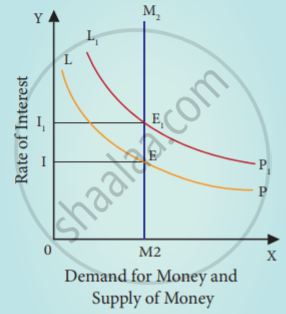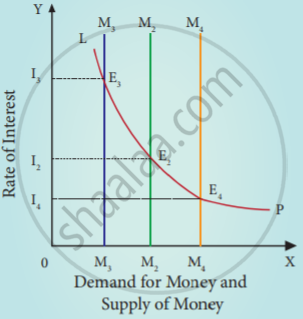Advertisements
Advertisements
प्रश्न
Explain the Keynesian Theory of Interest.
उत्तर
According to Keynes, interest is the reward for parting with liquidity for a specified period of time.
- Meaning of liquidity preference:
Liquidity preference means the preference of the people to hold wealth in the form of liquid cash rather than in other non-liquid assets.
Motives of demand for money:
The three motives of liquidity preference are.
- The transaction motive Mt = f (y)
- The precautionary motive Mp = f (y)
- The speculative motive Ms = f (i)
- Determination of Rate of Interest:
According to Keynes, the rate of interest is determined by the demand for and the supply of money. The demand for money is liquidity preference. The supply of money is determined by the policies of the government and the central bank. - Equilibrium between demand and supply of money:
The equilibrium between liquidity preference and demand for money determines the rate of interest. In the short run, the supply of money is assumed to be constant.

LP is the liquidity preference curve. M2 shows the supply curve of money to satisfy the speculative motives. Both curves intersect at point E which is the equilibrium. Here, the rate of interest is I.
If liquidity preference increases from LP to L1 P1 the supply of money remains constant, the rate of interest increase from OI to OI1

Suppose LP remains constant. If the supply of money is OM2, the interest is OI2 and if the supply of money is reduced from OM2 to OM2, the interest would increase from OM2 to OM4. If the supply of money is increased from OM2 to OM4 the interest would decrease from OI2 to Ol4
- Criticisms:
1. This theory does not explain the existence of different interest rates prevailing in the market at the same time.
2. It explains interest rate only in the short – run.
